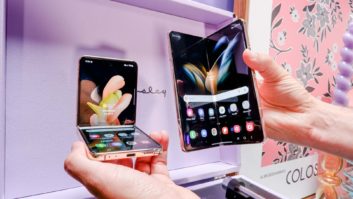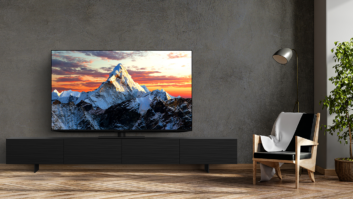Mahwah, N.J. – Showing
that it has eyes for 3DTV too, Sharp announced in Japan
Monday that it has developed 3D technology around it new four-color LCD TV
system.
Like competitive systems in the market now, Sharp’s system
requires the use of special 3D active-shutter glasses.
Sharp explained that most 3D LCDs use a system based on time-sequential
display technology using special active LC (liquid crystal) shutter glasses. Images
intended for the left and right eye on the LCD screen are presented sequentially,
alternating between the two perspectives.
The LC shutters in the special 3D glasses are synchronized with the
display, “opening” (becoming transparent) and “closing” (becoming
opaque) in such a way that the left and right eye see separate images, Sharp
said.
The human brain combines these two slightly different images to create the
perception of depth in a three-dimensional image.
The drawback to the system, Sharp said, is that displaying 3D images on a
conventional display using this system yield low brightness and crosstalk in
the image.
Sharp’s newly developed 3D LCD
system
combines five proprietary LCD technologies, including UV2A
technology, Sharp’s core LCD TV panel technology, four primary-color
technology, FRED technology and side-mount scanning LED backlight technology.
The system optimizes LCD for 3D TV by increasing screen brightness when
displaying 3D images 1.8 times higher than that of the conventional displays,
while minimizing crosstalk.
Sharp’s four-primary-color technology, currently marketed in 2D as
Quattron, utilizes four primary colors, adding Y (yellow) to the three
conventional primary colors of R (red), G (green), and B (blue).
Sharp said this technology
contributes to brighter, more vivid colors using higher light-transmission
efficiency through the panel and a wider color gamut, which had been difficult to
attain on conventional three-primary-color displays.













